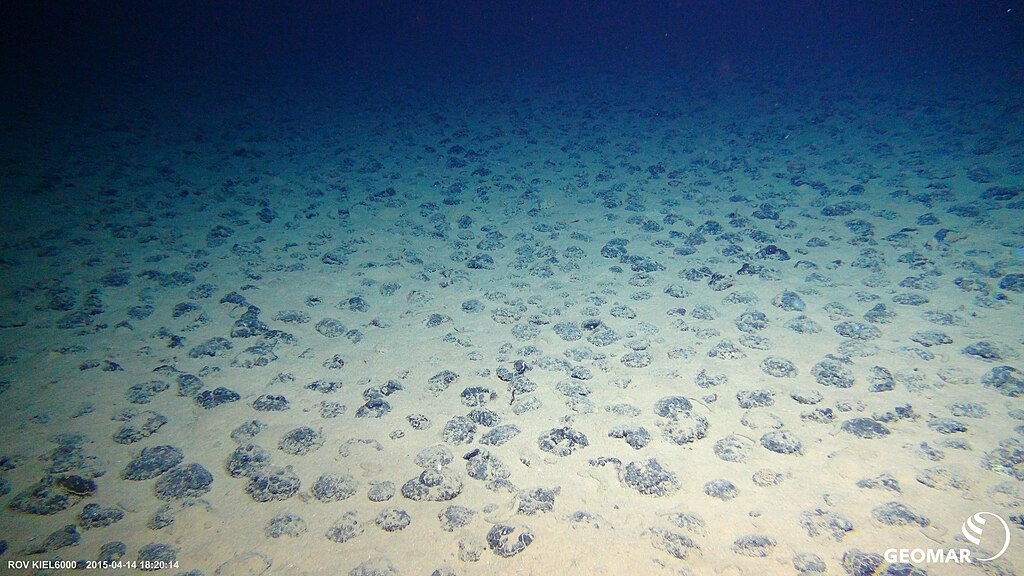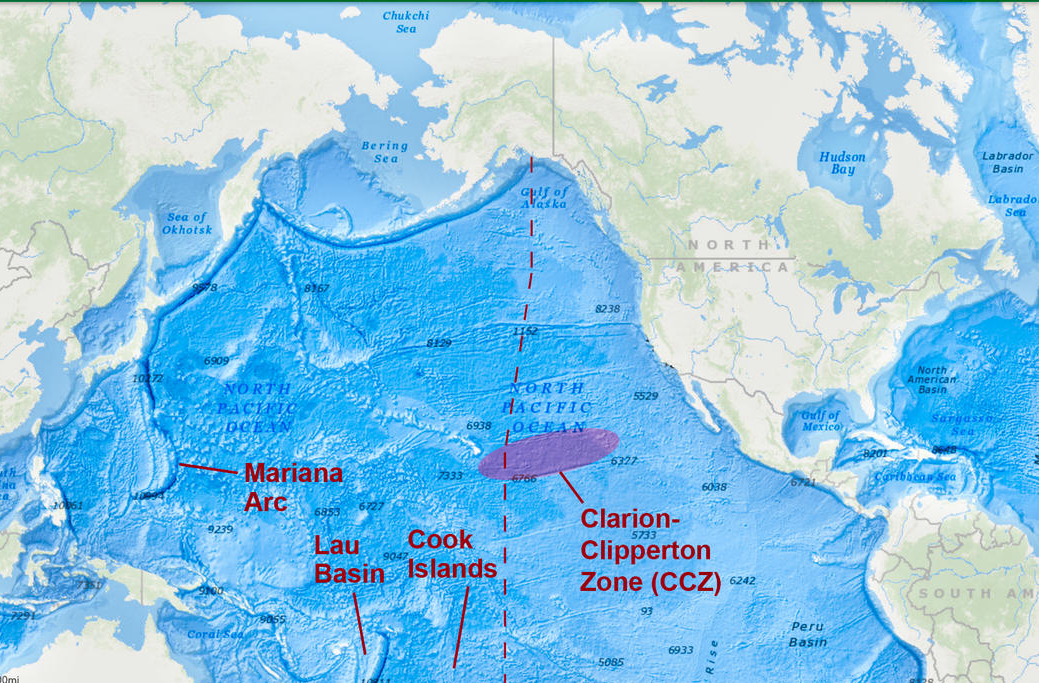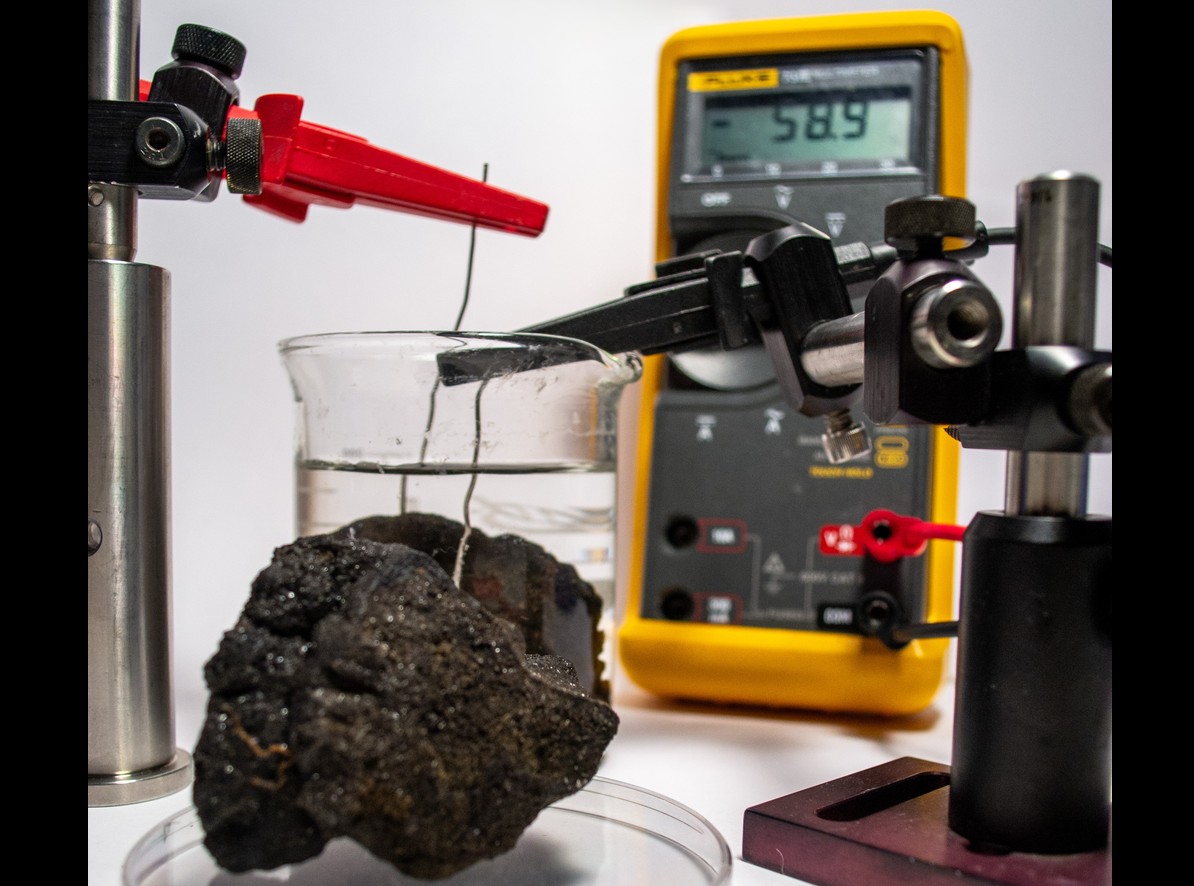Clarion-Clipperton Zone, Pacific Ocean —(Map)
Scientists have discovered a surprising new source of oxygen in the ocean. They believe that special rocks on the sea floor may act like batteries, creating oxygen from salt water. The discovery raises new questions about the effects of deep-sea mining.
For years, scientists have believed that the only way oxygen could be created in the ocean was through photosynthesis. That’s the process that plants use to turn sunlight into energy, also creating oxygen.
Huge amounts of oxygen get produced in the sunlight of the upper ocean, but scientists expected that on the dark ocean bottom, oxygen levels would drop as animals used the water’s oxygen for energy.

(Source: ROV KIEL 6000, GEOMAR [CC BY 4.0], via Wikimedia Commons.)
But in 2013, Andrew Sweetman, a scientist who studies the ocean floor, began to notice something strange. When he measured the oxygen in the water above the ocean floor, he found that the levels of oxygen were rising. That didn’t make sense. There’s no light on the ocean floor, so photosynthesis can’t happen there.
Dr. Sweetman thought his equipment wasn’t working. But he was wrong. In 2021, he used a different method to measure the oxygen levels. The new measurements also showed oxygen levels rising. That’s when he realized something unusual was going on. Somehow, oxygen was being created on the dark ocean floor.
Clarion-Clipperton Zone
The area where Dr. Sweetman made his discovery is called the Clarion-Clipperton Zone. It’s a huge area of the Pacific Ocean that stretches over 1.7 million square miles (4.5 million square kilometers). No single country controls the Clarion-Clipperton Zone.

(Source: USGS [Public domain], via Wikimedia Commons.)
Companies in many countries are interested in mining the sea bottom in the Clarion-Clipperton Zone. The area is rich in small rock-like objects full of valuable metals. These objects are called “polymetallic nodules”, and they form naturally on the ocean floor over millions of years.
These nodules may also be responsible for creating the “dark oxygen” that Dr. Sweetman noticed. To learn more about how the oxygen was being created, Dr. Sweetman collected samples of the nodules and the ocean floor around them, and took them back to the laboratory to study.
At first, they thought that tiny living things called microbes might be creating the oxygen. Then they thought that the nodules might be releasing the oxygen somehow. But neither idea was right.
Finally, Dr. Sweetman began to wonder if the nodules were somehow acting like batteries, and producing electricity. The idea made sense. After all, when electricity is passed through salt water, it splits the water into hydrogen and oxygen in a process called “electrolysis”.

(Source: Camille Bridgewater/Northwestern University.)
Working with scientists at Northwestern University, Dr. Sweetman discovered that the nodules produce a small amount of electricity. When the nodules are close together, they create enough electricity to produce the oxygen that Dr. Sweetman had detected.
The discovery raises more concerns about deep-sea mining. These nodules are exactly what many mining companies are hoping to collect. The nodules are full of important metals like cobalt, nickel, and lithium, which are used in things like solar panels and batteries
Dr. Sweetman believes that mining groups should think carefully about the new discovery before they start mining. The scientists say that the nodules may be important to the way the deep sea works. They worry that deep-sea mining could destroy the nodules and the environment around them.
Did You Know…?
The discovery of dark oxygen also brings up new questions about how life began on Earth. Scientists have long thought that life might have begun deep underwater. If the nodules really are creating oxygen, it could give scientists new ideas about how life on Earth first started.
😕
This map has not been loaded because of your cookie choices. To view the content, you can accept 'Non-necessary' cookies.
